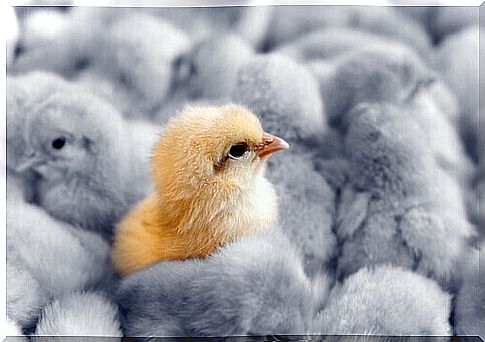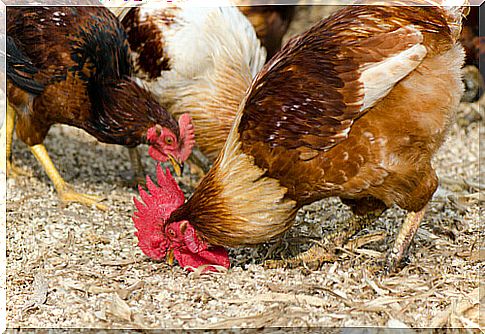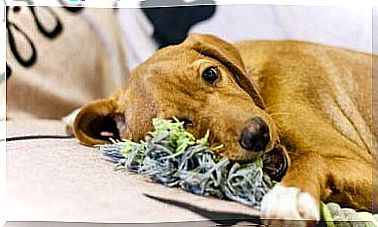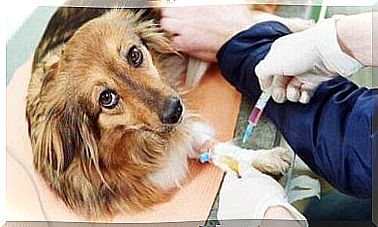Bird Flu: Impact On Poultry Farms

Bird flu poses a serious threat to the health of animals and humans. Furthermore, it has had a negative impact on the economy of poultry farms and on subsistence production, both in Italy and abroad. Let’s try to shed some light on the subject in this article.
What is avian flu?
Avian flu, also called avian plague , is a viral, acute and infectious disease. It affects birds and mammals of various species, including domestic animals and humans.
It was first recognized in Italy in the early 20th century, but quickly spread across the planet. Due to its mortality and the high risk of contamination, it is considered one of the most dangerous zoonoses by public health.

The disease is caused by the H5 and H7 subtypes of influenza A viruses belonging to genus A. Wild and domestic birds can be infected, but it is those belonging to the fowl group that are particularly vulnerable. For this reason, the mass media have often talked about it, referring to it as “chicken disease”.
Forms of transmission
The spread and transmission of avian influenza is more frequent in intensive poultry farming. The infected bird releases the virus mainly through its faeces and respiratory fluids. Therefore, the most frequent form of transmission is direct contact with contaminated bird feces and secretions.
However, the airways are also an important diffuser of these pathogens. Such as contact with food, water or already infected objects.
The danger of human contagion
Normally, bird flu does not affect humans. When this happens, it is due to an abnormal and unpredictable mutation of some influenza family viruses.
The first cases in humans were diagnosed in Hong Kong, in the year 1997. The sacrifice of millions of domestic birds prevented a pandemic from occurring.
Initial symptoms are reminiscent of the common flu: cough, sore throat, body aches and fever. As the disease progresses, the risk of developing severe breathing problems, such as pneumonia, increases.
Currently, the WHO ( World Health Organization ) is keeping the alert high for a possible avian flu pandemic. The justification is the high migration of influenza virus H5N1 serotypes on all continents.
Negative effects on chicken and hen farms
The disease, being fatal, greatly reduces the bird population. Added to this is the preventive need to sacrifice many contaminated birds. A problem that also affects the sphere of human nutrition and the market.
The situation has seriously affected the countries of Asia and Africa, where poultry farming is a fundamental activity for the economy. In the Black Continent , 70% of poultry production comes from domestic or subsistence farming (self-consumption).
New costs for prevention and control
Another worrying aspect for these producers is the costs of applying the new disease control and prevention measures.
How can these family businesses compete with large industries? The high costs of production would create an inequality that is almost impossible to fill. These small poultry farmers have literally been left to fend for themselves. Collapse of sales, preventive killing of animals and restart with expenses that have become exorbitant.
Loans for Small Rural Producers: Another Threat?
The decrease in income due to the mortality of infected birds prevents them from having money capital. Therefore, many small poultry producers end up using loans to finance debt.
This, however, creates further pressure for these farmers, as they find themselves taking on an additional debt that is very difficult to meet. Which means more expenses at a time of low budget .

A competitive imbalance has arisen between small and medium-sized farms with respect to large-scale industrial production. Multinationals and companies have high financial liquidity, being able to survive periods of low sales or falling prices.
Negative impact of avian in Italy
In Europe, the negative effects of avian influenza are already being felt in rural production areas. Recent reports confirm more than 2,700 high-risk pathogenic outbreaks in almost all European countries.
The France and the ‘ Hungary have the highest concentration of cases in the commercial breeding birds. While Germany has the largest number of diagnoses in wild birds. Spain has 10 cases of high pathogenicity in domestic poultry and 2 in wild birds.
In Italy, avian outbreaks have still been recorded in recent months, especially in relation to the pathogen H5N8. The most affected regions are Veneto and Lombardy, even if the Association of Agri-Food Supply Chains, Meat and Eggs in the press has repeatedly reiterated that the risks for the Italian population are practically non-existent.
Preventing and combating bird flu is an important public health issue where everyone must work together. Therefore, it is essential to strengthen hygiene measures and to consciously choose where to buy poultry products.









